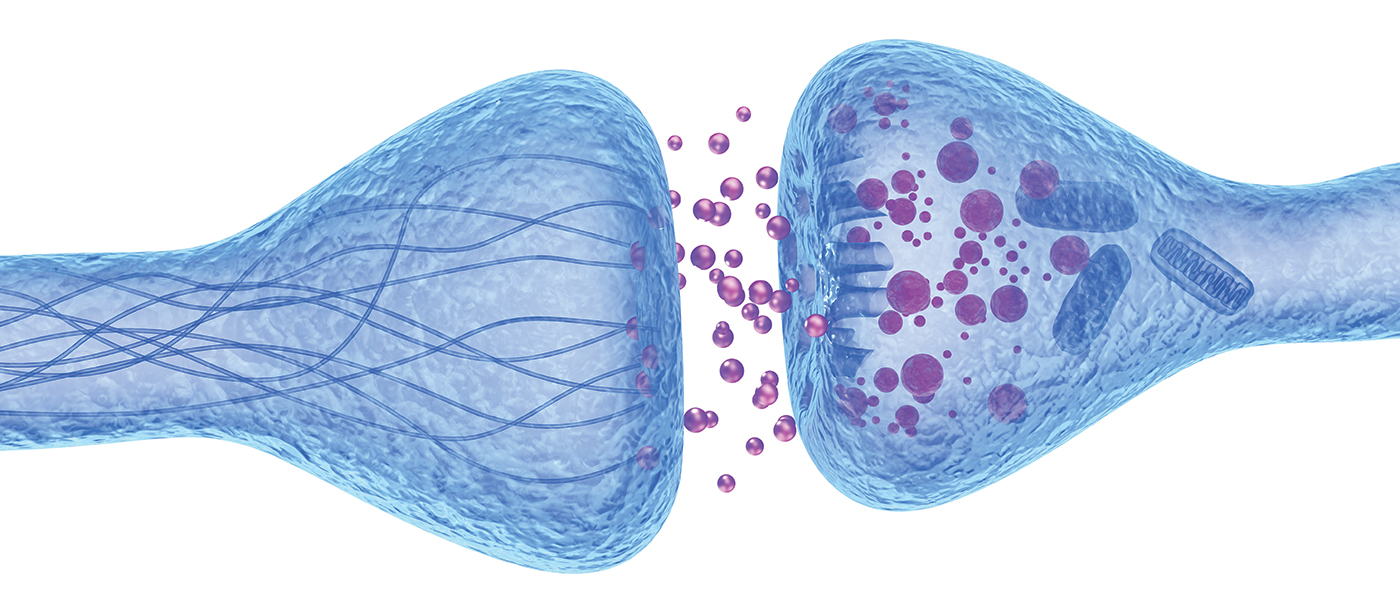Patterns in Brain Network Activity Reveal Distinct Biological Subtypes of Depression
Patterns in Brain Network Activity Reveal Distinct Biological Subtypes of Depression

From BBRF's Brain & Behavior Magazine - July 2019 Issue
Conor Liston, M.D., Ph.D. aims for more precise diagnosis and individualized treatment
Dr. Conor Liston, a 2013 BBRF Young Investigator, is modest in describing the progress recently made by his laboratory group at Weill Cornell Medical College—important research that is leading to a new way of classifying, and perhaps, treating depression. It’s potentially pathbreaking research, but still very much “work in progress.”
The research would not have been possible to do even a few years ago— a reflection of the rapid progress of his field, which many have called revolutionary.
“One of the things that gets me excited about coming to work every day—and I think a lot of people in neuroscience feel the same way—is that our research is being transformed right now by amazing new technologies that are enabling us to ask questions in new ways that would have seemed like science fiction only a few years ago,” Dr. Liston says.
For example, he says, “tools that provide read-outs of what groups of cells are doing at a particular moment, or during particular behaviors.” Instead of being able to look at a few cells at a time, as in the past, new tools based on advanced imaging technologies “are enabling us to look at many thousands or potentially millions of cells in real time as they interact across different brain regions.”
This capability is critical in Dr. Liston’s research, which is trying to solve the puzzle of how behaviors are linked with actions occurring in the brain involving millions upon millions of neurons— actions which change over tiny intervals ranging from tenths to thousandths of a second.
“Let me give you an example,” he says. “Every time you contemplate acting to pursue a reward, your brain performs an evaluation of the benefits, measuring the magnitude of the reward you expect to receive in terms of the amount of effort you expect to exert in order to obtain it.”
“We think this brain function, which we call effort evaluation, is probably disrupted in depression and other brain disorders, possibly in different ways. People who are depressed will often complain about how they just don’t feel any motivation to get out of bed in the morning, or pursue activities that may have once brought them pleasure.”
“We’re trying to break down that experience, which we call anhedonia,” he says, in terms of its biological components—“to understand how brain circuits are supporting different elements of those ‘effort-evaluation’ computations, and how they’re affected by factors such as stress, or taking antidepressants.”
In particular, Dr. Liston’s lab is trying to understand how changes in the strength of connections between neurons— something called synaptic remodeling— affects the function of microcircuits (circuits that connect hundreds or thousands of neurons in a small area) and how these changes affect larger networks in the brain.
Another remarkable tool in the Liston Lab’s toolbox is MRI, magnetic resonance imaging. Most people are familiar with it because of its widespread use in medicine, to figure out what’s wrong after we limp home from a 5K run or find ourselves unable to swing a tennis racket. Adapted to neuroscience, MRI can reveal how various parts of the brain function— how a particular stimulus like looking at a picture of a person laughing or scowling causes neurons in different parts of the brain to fire. This is called functional MRI or fMRI, and it too is a key enabler of Dr. Liston’s research.
HUBS AND SPOKES
How can fMRI help us understand mental illness? Dr. Liston explains in terms that any air traveler can appreciate. “Our airports are organized in a hub-andspoke system. There are a handful of airports like O’Hare or JFK or LAX that get tons of flights. The air network is organized so that to get from point A to point B, you probably have to fly through one or more hubs. We think the brain is organized in a similar way. Some brain regions act like hubs and other regions are connected to them.”
The analogy becomes vivid when one considers how networks organized in this fashion become perturbed. “Let’s say there’s bad weather in Boston,” Dr. Liston says. “The problem at that hub percolates out into the rest of the network. A delay in Boston will cause delays at New York and maybe even Denver, as well as in connections to other regions that each of them serves.”
“This kind of dys-synchrony—where the hubs are not in synch—is similar to something that we think is happening in the brain in certain psychiatric disorders,” says Dr. Liston. A dysfunction at a hub has consequences at other places in the network.
Dr. Liston made news early in 2017 when a large team that he led published in Nature Medicine the results of a massive analysis of fMRI scans. From multiple medical facilities they collected brain scans from 1,188 individuals, a sample consisting of people diagnosed with depression and controls with no depression. They were able to train computers to discover in these scans distinct patterns of “dysfunctional connectivity” in brain networks. While others performed the scans, his team figured out how to solve the big-data problem that this large sample of brain scans provided—each with innumerable potential points to scrutinize in comparison with all the other scans in the sample.
The faulty connectivity patterns the team discovered could be divided into four groups—which they propose are subtypes of depression, also called “biotypes” by the team. One of the most notable things about these biotypes is the way they relate to the symptoms of the patients whose scans revealed them. Another is what the four biotypes may be able to tell researchers about how patients are likely to respond to treatment.
Dr. Liston explains that depression is not homogeneous. “There are many different ways to be depressed,” he says. “The Diagnostic and Statistical Manual, or DSM, says that you can meet the criteria for depression if you have five or more of nine symptoms. This means that there are 256 unique combinations of symptoms that a patient can present with and still receive the diagnosis of depression.”
Increasingly, says Dr. Liston, neuroscience is beginning to understand that how we currently conceptualize psychiatric disorders in broad diagnostic bundles like “depression” can actually be an obstacle to understanding the underlying biology that affects individual patients. This explains the rationale behind the study that led to the discovery of four depression biotypes.
SEEKING OBJECTIVE MEASURES
Dr. Liston says his team “flipped upside down” the usual procedure: rather than look for depression subtypes based on patients’ symptoms and then asking whether there are known biological factors that correspond with those symptom-based subtypes, “we asked whether we could identify in a datadriven way any subtypes that were based strictly on biological measures. Objective measures—things you can measure in the patient’s blood or in brain scans.”
Each of the four connectivity patterns the team identified—the four proposed biotypes of depression—corresponded with different combinations of symptoms. “For example, one subtype was associated with high levels of anhedonia and low levels of anxiety. Another subtype was conversely associated with high levels of anxiety and low levels of anhedonia, and they broke down in other dimensions as well.”
Dr. Liston says “the most exciting thing about the research” was the discovery that patients in the different subtypes tended to respond differently to a depression treatment called TMS, or transcranial magnetic stimulation. TMS is a non-invasive form of brain stimulation that patients receive in standardized treatments lasting 37 minutes, usually in treatment modules consisting of 4 to 6 weeks of sessions, given five times per week. “We knew from previous research that a patient’s likelihood of responding to TMS was at least moderately related to how his or her brain networks were organized.”
Because the Nature Medicine study was based on data from patients who had already been treated, the team could learn which of the patients received TMStreatments and who among these had responded to it. The responders were overwhelmingly those who fit into just one of the four biotypes discerned in the study—if you were in that subset of patients, you were three times more likely to have been helped by TMS, the data showed.
The clinical symptoms of patients in this biotype could not, by themselves, predict the response to TMS; this valuable information only emerged when different combinations of symptoms were correlated with brain connectivity patterns.
“We aren’t claiming that there are only four subtypes of depression,” Dr. Liston stresses, “or that our way of defining them is the best way possible. On the contrary, we think there are likely many subtypes of depression that can be defined on the basis of objective biological data. We’re certain that with steadily improving methods and larger data sets that we and others will be able to come up with even better ways of capturing the heterogeneity in depression and that this will reveal other subtypes and other kinds of correlations and biomarkers.”
Dr. Liston’s team is now engaged in studies designed to confirm the biotypes of depression already discovered, and separately, “whether the brain network dysfunctions that define them predict different combinations of symptoms that doctors see in the clinic, and whether biotypes can help direct patient care by correlating depression subtypes with treatments that are most likely to help specific patients.”
— Written By Peter Tarr
Click here to read the Brain & Behavior Magazine's July 2019 issue



